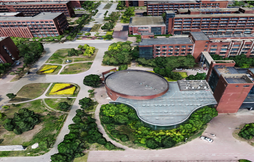Motivation
For reconstruction of large outdoor scenes only parts of the surface are scanned. Several surface reconstruction algorithms require a closed surface to work well or at all, however, e.g., by creating a signed distance function that needs an orientation.
Description
By integrating the camera parameters from the scan positions, we know both the local orientation of the points (pointing towards the sensor) and which space in the view frustum has been seen (and is, therefore, empty)., Cone Carving [1] is an example on how to use visibility information to reconstruct incomplete scans but cannot handle complex scenes. Occupancy grids [2] can store this seen/unseen/surface information but do not scale due to their cubic complexity. We propose to use our own DDS data structure that compresses the inherently 2D surface embedded in 3D space [3].
[1] https://dl.acm.org/doi/abs/10.1145/1866158.1866176
[2] https://ieeexplore.ieee.org/stamp/stamp.jsp?arnumber=30720
[3] https://www.cg.tuwien.ac.at/research/publications/2021/Radwan_2021_Occ/…
Tasks (depending on PR/BA/DA and number of students)
- Fast integration depth images from scan positions into the DDS (on the GPU), augmented by a quadtree map for fast access
- Implement a distance function query to find the closest surface element from a given position in space
- Use orientation from points towards scan position to create a globally consistent orientation for the seen space
- Apply a reconstruction algorithm, e.g., Poisson Reconstruction [4]
- Interpolate the surface points detected from the scans with a smooth function
Evaluate the results comparing with state-of-the-art surface reconstruction algorithms for large outdoor scenes
Requirements
- Knowledge of English language (source code comments and final report have to be in English)
- Knowledge of C++ is necessary, experience on CUDA or parallel programming a plus
Environment
The project should be implemented platform independent (Linux, Windows).
A bonus of €500/€1000 if completed to satisfaction within an agreed time-frame of 6/12 months (PR/BA or DA)
